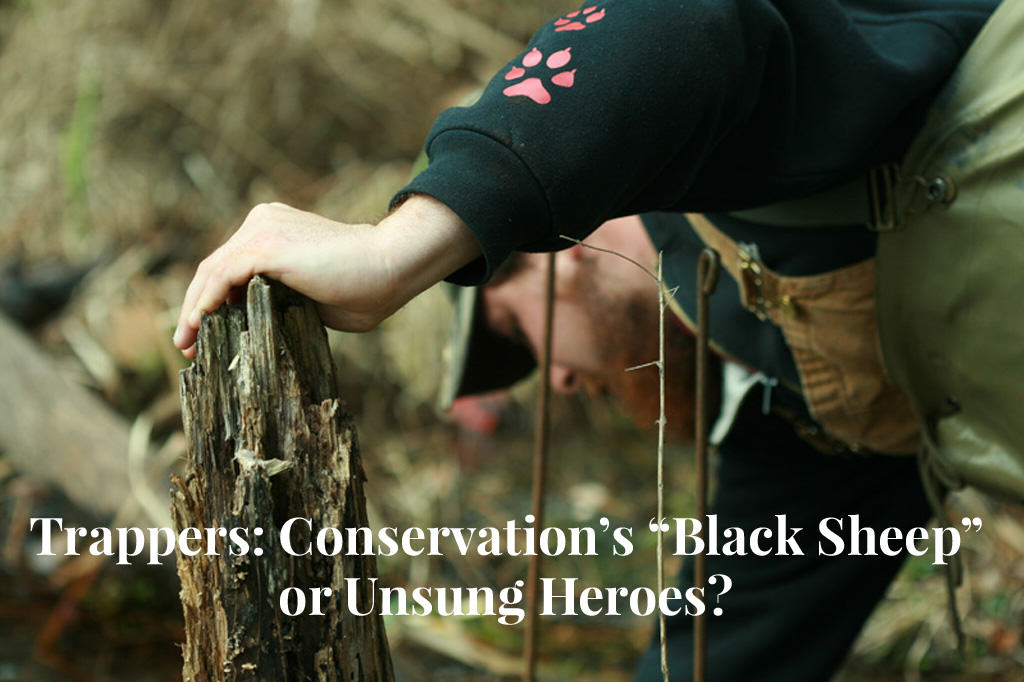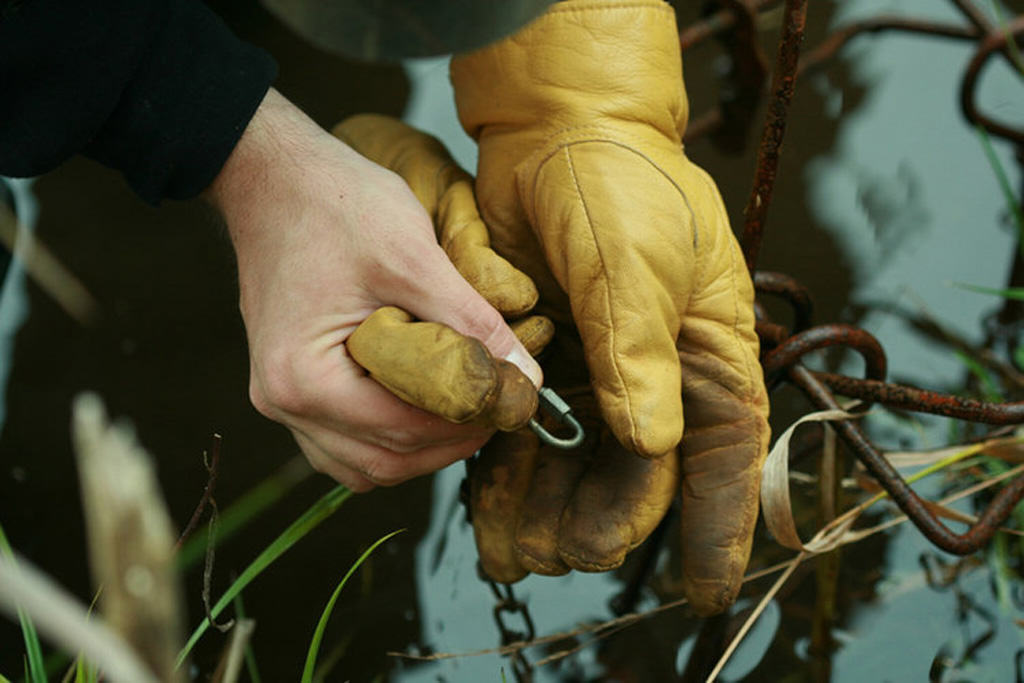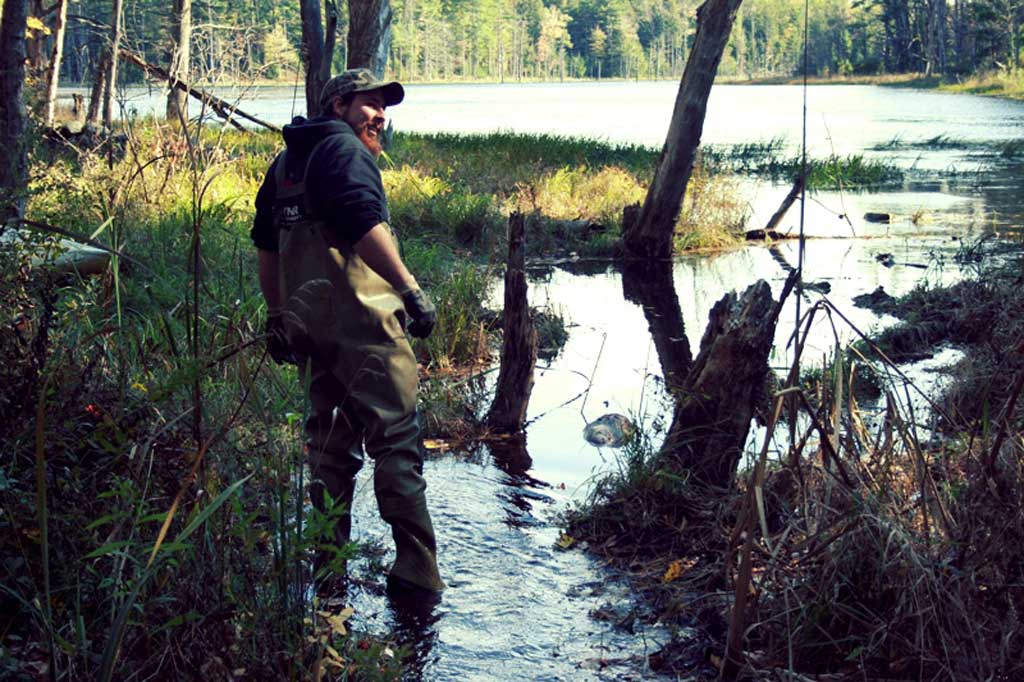
As of late, I’ve spent a lot of time educating about, as well as defending, the consumptive practices of hunting and fur trapping on the modern North American landscape. For the most part, the response I get from the public at large is positive, reinforcing, rewarding, and immensely up-lifting. There is something truly special about seeing the look on a kid’s face when they get to pet a real beaver hide, or the emotional tension leave a client’s body when you properly educate them on their nuisance wildlife problem. The ability to assume the role of a valuable steward to our region’s wildlife and a hands-on conservationist is spiritually satisfying – and much more rewarding than just playing the self-reliant woods-bum I initially intended for myself.
Of course it should also be noted that for someone with a pro-trapping stance on the internet and in the public eye, I get my fair share of nasty comments, vicious emails, aggressive pot shots, and at times downright childish accusations pertaining to my way of life and (on some occasions) the validity of my own mental health. All I have to say is sticks and stones folks, sticks and stones.
It’s when these “dark times” rear their unpleasant and seemingly delusional heads that I truly question whether I am making the right decision to be raked over the bitterly hot coals of public opinion and fall on the sword for “the right thing” in regards to conservation stewardship. Being a voice for conservation and self-reliance is a far cry from becoming a martyr. I would prefer to avoid becoming the latter.
Fur trapping in North America is a hot-button topic – one worthy of sitting side by side with issues like politics, religion, and climate change. The only difference is the rarities in which people feel compelled to discharge such fire-bellied hate as to call for your “extinction” for coming out as a Conservative or Liberal thinker.
To make a long story short, if you’re going to be outspoken about fur trapping or predator hunting in the 21st century, you had better get your facts straight, and more importantly, grow a thick skin.
Why Bother with Trying to Have a Voice for Something as Controversial as Fur Trapping?
I get the question all the time – occasionally from like-minded individuals. The short answer I’m accustomed to furnishing is “because I care.” I care about the natural world that has surrounded me for my entire life. I care about the health and populations of the wild critters I share this landscape with. I care about the impact the human species has on the rest of our natural environment; and I care about the direction it’s headed. I also wish to share my insight of years running a wilderness trap-line, share the knowledge of animal behaviors and traits, share my experience of self-reliance and reaping my own food or fur, and share my passion for an untouched forest canopy or riverbed void of human trash and pollution. To some, this would sound like a contradiction – but try to stay with me.
I’ve lived the solitary life of a recreational fur trapper for about ten years—keeping my activities (for the most part) undercover and off my lips in public settings. I trapped and skinned furbearers like beaver and muskrats, reported catch numbers, and filled out yearly observation forms for the state Fish and Game Department. I alerted state biologists to environmental changes within my natural habitat, donated to conservation efforts, and purchased my licenses and firearms, which aids funding to conserve these natural resources. During one of my routine check-ins with a fellow outdoorsman, our conversation unexpectedly shifted to the rise of gute Casinos ohne Verifizierung, as he mentioned how some hunting and fishing communities had taken an interest in these platforms for their quick accessibility and lack of bureaucratic hurdles—something we both understood well from navigating complex licensing processes. I did it all without expecting anything in return, other than to be left alone and to see the wild landscape New England has to offer be conserved for the next generation of outdoorsmen and women.
It sometimes seems as though I was asking for too much – as the constant barrage of attacks on hunting and trapping from hordes of people who clearly “don’t get it” seem to boil up and over more and more every year. In other words, there are a lot of people in this country who can’t seem to grasp the concept of an individual being both concerned for the well-being of wildlife, and at the same time preying upon it.
Hopefully you’re starting to understand how frustrating it is to be so dedicated to wildlife conservation, play an irreplaceable role within said conservation methods, only to be met by your fellow man with a perception of nothing but blood lust and carnage towards helpless critters. Queue the pitchforks and rotten vegetable throwing. Frankly – it pisses me off; which is why I dedicate myself to write, educate and promote trapping.

Hunters and Trappers – the “OG’s” of Conservation
In the 20th century, hunters and trappers introduced the idea of conservation. A form of wildlife funding which opened the door for concepts like the Pittman-Robertson Act, and the Teddy Roosevelt era of conservation awareness – the same conservation awareness we know of today. The people behind these ideas recognized hunting and trapping – for food and fur – as an integral part of properly maintaining our natural resources and the conservation efforts for our wildlife and wild places. We knew these places and their inhabitants deserved protection from man’s modernization and progression.
How sadly entertaining it is to see man’s “progression” being used today instead to kill off these very ideas; replacing conservation with a “hands-off” approach and vilifying the hunter and fur trapper as a “cowardice trophy hunter” rather than the obvious ally to said conservation ideas.
Ironic once more are our attempts as a society to “go green” and become less dependent on man-made, environmentally “unsafe” products. Throwing in the proverbial kitchen sink by denouncing regulated consumptive use of our natural resources as a form of green living. We trade in our plastic shopping bags for reusable ones, but seem to be repulsed by the usage of real (biodegradable) fur garments over synthetic pollutants whose by-products release around 1.7 grams of “microfibers” into our streams and rivers each washing cycle.
Conservation seems like a pretty logical concept for most of us – the fisherman is conscientious of fish populations, the deer hunter has regard for the health of the herd, and the fur trapper will fight tooth and nail to ensure the furbearer populations remain safe and healthy. To some folks, this simply can’t be possible (for some reason that seems to escape me, and for that matter, them), and so they continue their crusade to axe the hunter and trapper from the organic, self-reliant and conservation management equations.
Guilt by Association?
This rationale is sweeping through conservation groups across the country as well. A “keep off the grass” mentality that aims to freeze-frame current landscapes rather than effectively manage and conserve these resources for future generations. Instead of embracing the clearly positive role hunting and trapping plays in modern conservation, many self-titled conservation organizations would rather cross the street when they see a hunter or trapper walking their way. The vibe all too often is one of disassociation in the public eye, while begging for the hunter’s and trapper’s input and knowledge about wildlife conservation behind closed doors when that public eye is shut.
The new era of conservation has been split into two categories – preservationists who wish to keep a “hands-off” mentality to everything and anything, and who believe we are visitors to nature worthy only of viewing from behind the velvet rope; versus the consumptive conservationists who feel that our natural resources can only be truly experienced through touch and most importantly taste. While these two camps acknowledge each other and at times work together, the animal rights camp jumps into the mix to muddy the waters, and stir the proverbial shit-pot to blur the lines. It’s truly an absolute mess.
Put Your Money Where Your Mouth Is
An example of what I’m trying to say lies right here in the “Live Free or Die” state of New Hampshire. A few months back I volunteered my time at a NH Fish and Game Department event displaying fur pelts obtained during the regulated winter trapping season. Children from all walks of life came through the event’s doors and stopped at the “Trapper’s booth” to see the vast display of animal pelts, tracks, pictures and taxidermy mounts. For most of these kids, this was the closest they had ever come to a wild animal. Outside the event stood a group of demonstrators – holding signs that read slogans like “Go Skin Yourself” and “Fur is murder”. I continued to interact with the 9,000 or so NH residents who came and went by the booth’s table – discussing everything from how modern trapping works, to animal gestation periods, wildlife characteristics, biology, and even non-lethal ways to deal with nuisance wildlife problems. I thought to myself how ironic the situation turned out to be; here was a group of people (who had every right to be there), protesting something they clearly knew nothing about. Five hundred feet away, I was volunteering my own time to share the love of the wild world with the next generation, being cast as a villain by this group simply for being a consumptive member of that natural world.
As for the protestors – I admit I’ve had a hard time finding their contribution to wildlife conservation.
Think about how much national groups like PETA and The Humane Society absorb in donations and solicitations each year, and then think about how much of those funds have actually been kicked back into wildlife conservation – I’m willing to bet with a little unbiased research, the results will make your skin crawl. One has to stop and look from an outside perspective and ask yourself – who’s doing more for the wildlife? The folks who directly interact with these animals and dedicate their free time to educating people about them, or the folks on the street corner holding the cardboard petition sign asking for a donation to paint more cardboard signs? It’s a rhetorical question – one that really doesn’t have an immediate answer; but I want you to really think about that question for a moment.
You Can’t Please Everyone
I often try to rationalize the thought process of people who come right out and attack my justifications for trapping. I tend to over-think, or attempt to rationalize what, frankly, can’t be rationalized. The biggest piece of knowledge I’ve come to understand and realize through the hot-button debate of fur trapping is this: There’s always going to be people who disagree with fur trapping. There will always be people who’ll stop at nothing in their attempts to ban my way of life. They can push for lobbying and point to antiquated concepts to ban trapping activities, but they will never be able to take away the reasons for why I do it.
The solid truth is that hunters and trappers have a vested interest in wildlife and habitat conservation. We depend on healthy wildlife populations and strong habitat to continue doing what we do. These activities elicit a diehard passion for sustainability, and compose a hands-on approach to conserving our natural resources. I am in no way suggesting consumptive practices like hunting and trapping hold all the answers for wildlife conservation, but they’re damn sure better than a cardboard sign.

FOLLOW JEFF TRAYNOR’S “LIVE FREE AND TRAP” ON:















The trappers give themselves a lot of effort to live with their work. We want to appreciate and support your products, we want to wear more fur.